One Night's Journey at Travel Bar
An Evening Sipping Through the Stocks at One of the Best Whiskey Bars in the United States.
The greatest whiskey bar in Brooklyn, and one of the best in the nation, does not have the word whiskey in its name. Or Bourbon or rye or Scotch, for that matter. It’s called Travel Bar and it’s named after those portable, suit-case-like bars that were popular wedding gifts in the 1950s and ‘60s. A bunch of them line a high shelf that runs the length of the narrow space.
Now is the time for all good people to come to the aid of The Mix! Subscribe below and get one year of The Mix for $40. That’s $3.33 a month. Step up and support independent journalism!
When Mike Vacheresse and Joe Sweigart opened the bar just over ten years ago, they served twelve wines by the glass, all in proper glassware. Vacheresse used to work in fine dining. But the neighborhood “didn’t like that,” according to Vacheresse. Today there are four wines: red, white, rose and sparkling.
There are also a few beers on the menu, and some cocktails of which Vacheresse is justifiably proud. But those adult beverages are not why the majority of people come to Travel Bar. They come for the whiskey.
And they are not disappointed. Travel Bar carries 188 different Bourbons and 65 different ryes. The latter may very well be the best rye selection in the city. There’s also other styles of American whiskey, lots of Scotch, Irish whiskey, Japanese whisky, and various whiskeys from around the world.
Those numbers don’t mean Travel Bar has every Bourbon and every Rye, however. For instance, it doesn’t carry Jim Beam, a Bourbon you can find on the back bar in every saloon in America. Nor does it sell Old Grand-Dad.
“I don’t do well with Jim Beam products here,” said Vacheresse, “because they can get that anywhere.”
He told a story of the bar’s recent 10th anniversary celebration. As specials, he sold Old Rip Van Winkle 10-year-old for $30 an ounce and a 15-year-old Irish whiskey from the Cooley distillery, also for $30 an ounce. Van Winkle whiskeys are some of the most sought-after in the world. But the bar sold twice as much Cooley that night.
“That’s because my customers, if I think it’s interesting and good and weird, they want to taste that,” said Vacheresse.
That those customers come at all is a testimony to Vacheresse’s achievement. For Travel Bar is not easy to get to. It is on the far south end of Court Street in Carroll Gardens, Brooklyn. The nearest subway stop is the Smith-9th Street stop on the F and G lines, which stands 87.5 feet above the Gowanus Canal. It is the subway station with the highest elevation in New York; it was built that high to accommodate the high-mast ships that once plied the canal. It takes 5 to 10 minutes for a passenger to descend from platform to the ground.
But come they do. So do liquor reps and distillers from Kentucky, Scotland, Ireland and elsewhere, who regularly hold events here to showcase and/or launch their whiskeys. For many, it is their favorite bar in the city.
“The whole point, as a bar owner, is, number one, I’m introducing you to something you’re not going to get anywhere else and you’re gonna like it and you’ll trust me, and then I can take you on a journey,” said Vacheresse. “That’s the whole schtick of Travel Bar, to get people to come back and try new shit. If I look at sales and see that I sold a bunch of Blanton’s, I know they’re not regulars.”
I went to Travel Bar recently to try some “new shit,” or at least some shit I hadn’t ever tasted before. Joining me was another spirits writer, Aaron Goldfarb, who has attended many a Travel Bar event. When I got there, Goldfarb was already seated at the bar and Vacheresse was cataloguing the new arrivals of the day. Vacheresse is a big, friendly figure with a thatch of graying brown hair. His work wear varies between t-shirts and flannels. He looks and acts more like the barflies he serves than a bar owner—which is probably why his customers trust him so much.
That day’s deliveries included a fig liqueur, an 8-year-old, overproof Rare Character Brook Hill Bourbon, a 9-year-old Rare Character wheated Bourbon, and three new Scotches.
On the chalkboard behind Vacheresse were written the eight barrel picks Travel Bar is currently selling. Vacheresse regularly travels to Kentucky to select special barrels that are then bottled for sale at his bar. Though they hail from a variety of distilleries, they all have one thing in common.
“I always look for big,” he said. “I want it to taste like the characteristics of the distillery to me, but I also want it to be big and bold. If anybody comes in, and says, ‘I don’t know. I like Bourbon, but I don’t know what I like,’ I’ll say, ‘Have my Eagle Rare.’ They’ll go, ‘No, I’ve had my Eagle Rare.’ And I’ll say, ‘You haven’t had my Eagle Rare.’”
We tried his Eagle Rare. It was delicious, and somehow slightly better than the standard 10-year-old Eagle Rare put out by Buffalo Trace, and sold in stores (if you can find it) for $80. Travel Bar sells their barrel pick for $10 an ounce.
That’s another thing that keeps whiskey fans coming back to Travel Bar. The prices are fair. “There are a lot of whiskey bars in the city that are fantastic,” said Vacheresse, “but you can only go there when it’s an expense account.” The top seller in the bar is Weller 12-year-old, a bottle that will cost $300 if found in a liquor store. At Manhattan bars, an ounce will set you back $25-$35. At Travel Bar, an ounce costs $12.
But there’s a catch.
We travel a lot at the Mix—traveling is paid for by subscribers! If you become a paid annual subscriber this week, you’ll get one year of The Mix for $40. That’s $3.33 a month. Support independent journalism!
“If someone comes in and tries to drink this all night, I won’t let them,” said Vacheresse. “I can’t have a wall of whiskey if all you do is drink what you already know.”
Those friendly prices sometimes attract an unwelcome sort of customer. When Travel Bar had Yamazaki 18-year-old—one of the most venerated and expensive whiskeys in the world—it sold it for $38 an ounce. One night, a guy dining at the nearby restaurant Buttermilk Channel came in and spotted it on the menu.
“He said, ‘Well, at that price I have to have an ounce of it,’” related Vacheresse. “I gave him an ounce. He literally chugged it and put the glass down. I said to his face, ‘I’m sorry I sold that to you.’ It was a notch on his belt. That is not what we’re about. We’re about a conversation. It's more of a feel of a community here.”
Booze reporters like Goldfarb and myself, when faced with such an impressive wall of whiskey, can’t help but pepper the owner with questions. But we never worried that Vacheresse wouldn’t have the necessary information.
“I do like that he always has an answer,” said Goldfarb.
What’s the most expensive whiskey in the bar? That would be Last Drop, a company owned by Sazerac that puts out pricy bottles of limited-edition rare spirits. After Sazerac bought the brand, Drew Mayville, the master distiller at Sazerac, put together a whiskey blend of 14 different barrels he had set aside over his 20-year career. It costs $300 an ounce.
What’s the weirdest Bourbon he stocks that still tastes good? That would be Jimmy Red from High Wire Distillery in Charleston, South Carolina. It’s distilled from the Jimmy Red breed of corn native to the area. High Wire makes an expression that is aged in peach brandy barrels. It tastes like nectar ready-made for a Julep or a Crusta.
What’s Vacheresse’s favorite rye whiskey? That would be The Senator, a six-year-old, barrel-proof rye by Proof & Wood. The Senator is a sourced whiskey, its juice coming from MGP, a mammoth facility located in Lawrenceburg, Indiana. MGP provides many Bourbon and rye brands with their liquid.
Ten years ago, “sourced” was a dirty word. Whiskey enthusiasts and writers tended to look down on companies that didn’t distill their own spirits. Today, that situation has been turned on its head.
“The hottest brands are all sourced,” said Vacheresse. “The old stalwarts, not so much.” Travel Bar has a whole shelf of sourced whiskeys—Pinhook, Rare Character, Seelbach’s, Old Carter—and they are placed prominently at eye level near the end of the bar.
Before we left, we sampled a Danish rye, a German rye, two Polish ryes, a barrel pick of New Riff Bourbon, a Brooklyn Bourbon that had oats in its mash bill and a Bourbon from Boulder, Colorado.
Lately, some articles have been published that have proclaimed that the American whiskey boom of the last two decades is at an end. Sales are down, there’s a glut of whiskey and distilleries are laying off staff.
Vacheresse isn’t buying it.
“I think that it’s asinine,” he said. “It’s just clickbait. It’s not true, first of all. I think real Bourbon drinkers, people who have been drinking bourbon for a long time, are not affected by this craze at all. They’re affected because there was a lot more variety available, and the prices also skyrocketed. But people who drink everyday bourbon are always going to be there.”
He also pointed out that, American whiskey boom or not, Travel Bar will travel on, because it has always worn two hats: destination whiskey bar and, because of its remote location, local tap.
“We’re a neighorhood bar,” he said. “A lot of people just drink beer here. And they always joke, ‘My local beer bar has a really good whiskey selection.’”
Subscribe below and get one year of The Mix for $40. That’s $3.33 a month. Step up and support independent journalism! Thank you!
Bourbon and Rye Reviews, Round 3
Fort Hamilton Rye, Brooklyn, 45% abv
Fort Hamilton Distillery is based at the Industry City complex in Brooklyn and was founded in 2016. This five-year old rye is distilled from 90% New York State-grown rye and 10% malted barley. It has a muted grainy nose with touches of chocolate-covered cherry. The palate gives you both sweet and bite; it is spicy and bright with citrus notes. Good for mixing into cocktails. (The distillery has a bar that serves excellent drinks.)
Shenk’s Kentucky Sour Mash Whiskey, 2024 release, Kentucky, 45.6% abv
Mitchter’s Distillery in Kentucky puts out annual editions of two limited-release whiskeys every year: Shenk’s and Bomberger’s. Both are named in honor of a pivotal figure in the history of Michter’s. In 1753, Swiss Mennonite farmer John Shenk founded Shenk’s distillery, which was later renamed Bomberger’s Distillery in the 1800s. The bottles are part of what they call their “legacy series” and over the years they have become highly anticipated and much sought after. The 2024 release of Shenk’s uses whiskey that “has aged in French oak sourced from the Vosges region of France before being naturally air dried and seasoned for 24 months and being toasted to our specifications.” The unique mash bill is made with a substantial amount of rye and includes malted rye and caramel malt. It has a lovely nose full of stone fruit, a nose to linger over. The flavor is creamy with floral and ginger notes. One is almost tempted to use it as a perfume after tasting some! A sipping whiskey to be sure.
Bomberger’s Kentucky Straight Bourbon Whiskey, Kentucky, 2024 Release, 54% abv
The Bomberger’s is aged in Chinquapin (Quercus muehlenbergii) oak. This year’s release also utilizes malted rye in its recipe. It has a complex, deep, candied nose—much bigger than you usually get on a Bourbon—of caramel, vanilla, raisins, chocolate. The scrumptious, warming palate is like a liquid version of perfectly done toast with orange marmalade and raspberry jam. Another sipper!
1792 Small Batch Bourbon, Kentucky, 46.85%
This whiskey is part of a line of small batch Bourbons owned by the Sazerac Company. It is produced by the Barton 1792 Distillery in Bardstown, Kentucky, which Sazerac has owned since 2009. It once had an age statement of 8 years but it does no longer. The mash bill is described as “high rye.” The somewhat muted nose has vanilla, bright fruit, and mandarine oranges. The rye’s spiciness comes out immediately in the palate. But there’s a classic, vanilla-wafer, Bourbon sweetness at the core, and the whole smooths out into a creamy long finish. For sipping or making Old-Fashioneds.
Woodinville Straight Bourbon Whiskey, Washington, 45% abv
The Woodinville line of whiskeys is a good illustration of a fact people often forget: Bourbon can be made anywhere in the United States. The distillery was founded in 2010 by Orlin Sorensen and Brett Carlile, who were mentored by the legendary Maker’s Mark distiller Dave Pickerell. Their first Bourbon came out in 2015. The corn (72%), rye (22%) and barley used in the mash bill are all grown in Washington State. It has a pleasant bourbon-y nose. Though aged five years, it tastes younger, smacking of toast, vanilla, marmalade and cereal. A Bourbon for cocktails.
Woodinville Cask Strength Straight Bourbon Whiskey, Washington, 58.19%
Woodinville’s cask strength Bourbon has a nose very similar to the standard version. But on the palate, it is richer in flavor, with notes of orange and spice. There is a fair amount of heat up front, yet the finish is fairly gentle. It’s pretty gentle as cask strength Bourbons go. Made for sipping.
Woodinville Straight Bourbon Whiskey Finished in Port Casks, Washington, 45% abv
This limited-edition product was introduced in 2017, but it proved so popular that Woodinville made it a permanent part of its line. It’s my favorite of their Bourbons as well. The port-cask finish gives the whiskey a silky texture and long, warm finish. The palate has note of grape, raison, plum, chocolate and cherries. Best as an after-dinner drink.
Odds and Ends…
I wrote about the Cosmo at Cosmo, a newly opened club in Manhattan, for the Wall Street Journal… Bulleit has finally joined the Bottled-in-Bond brigade. It will introduce it’s first ever bonded Bourbon this spring … Leyenda, the trailblazing and much-loved Latin-spirits cocktail bar in Brooklyn, will close its doors at its current location on Smith Street on March 25. Co-owner Ivy Mix said in an Instagram post, “The little bar that could, will be celebrating our life over the next 2 months featuring bartenders past and present. This isn’t the end of Leyenda. This is not goodbye/adios, this is a see ya later/hasta luego.”… Gage & Tollner, the Brooklyn restaurant, will hold a “Celebration of Pableaux Johnson,” on Monday, Feb. 17, 6-10 p.m. Red beans and turkey-bone gumbo will be served and all are welcome until they run out of room… I will collaborating on a Martini event at the restaurant Palizzi Social Club on April 5 as part of the Philadelphia Chefs Conference. Stay tuned for details. Other figures involved in this year’s event included Jeff Gordinier, Tom Colicchio, Brett Anderson, Brett Martin, Laurie Woolever and Ti Martin… Storied restaurant critic Robert Sietsema has started a Substack newsletter called Robert Sietsema’s New York. You should subscribe. He recently wrote about his 10 favorite hot dogs in New Jersey and New York, and I can get behind most of his choices!






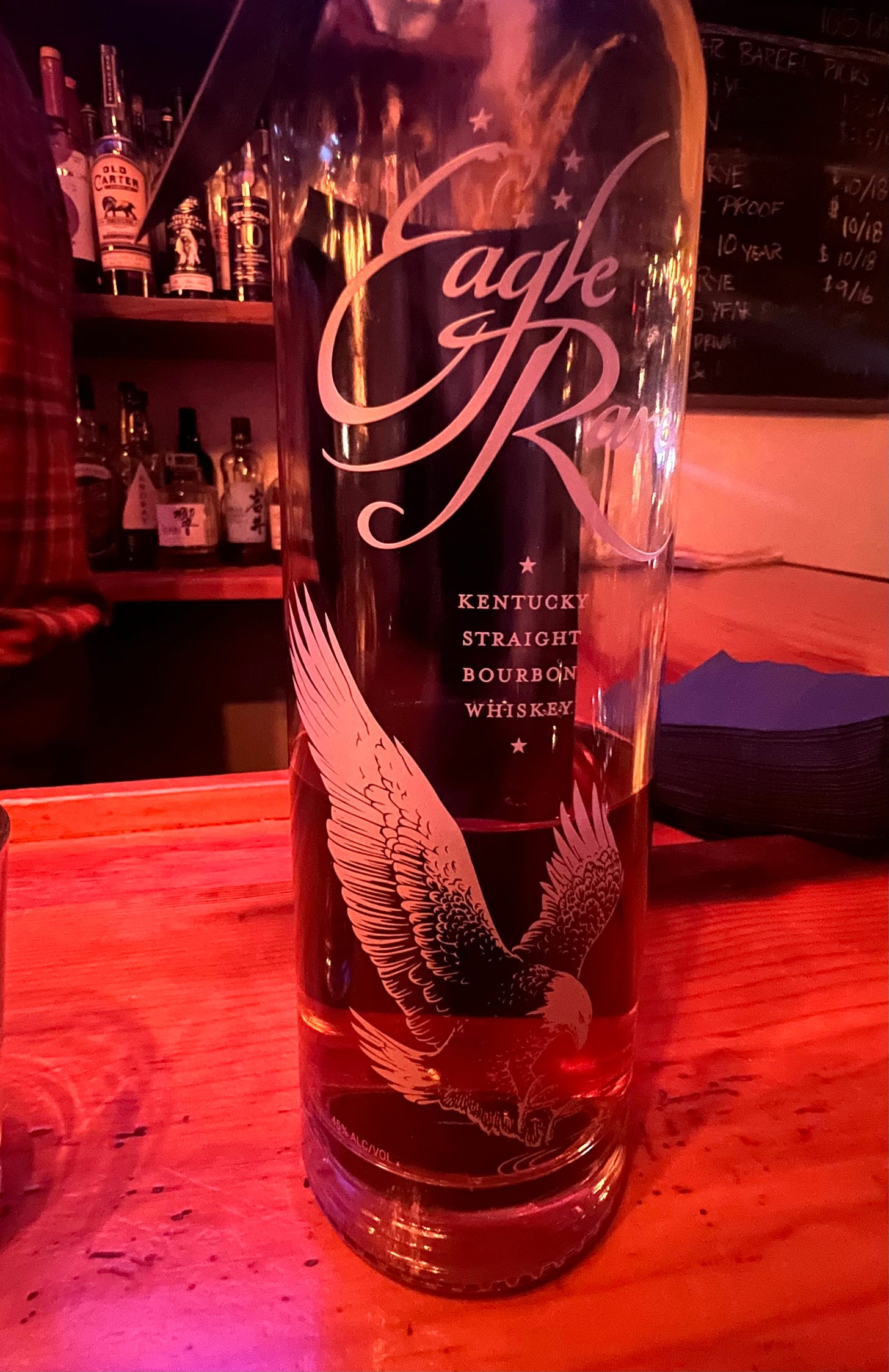
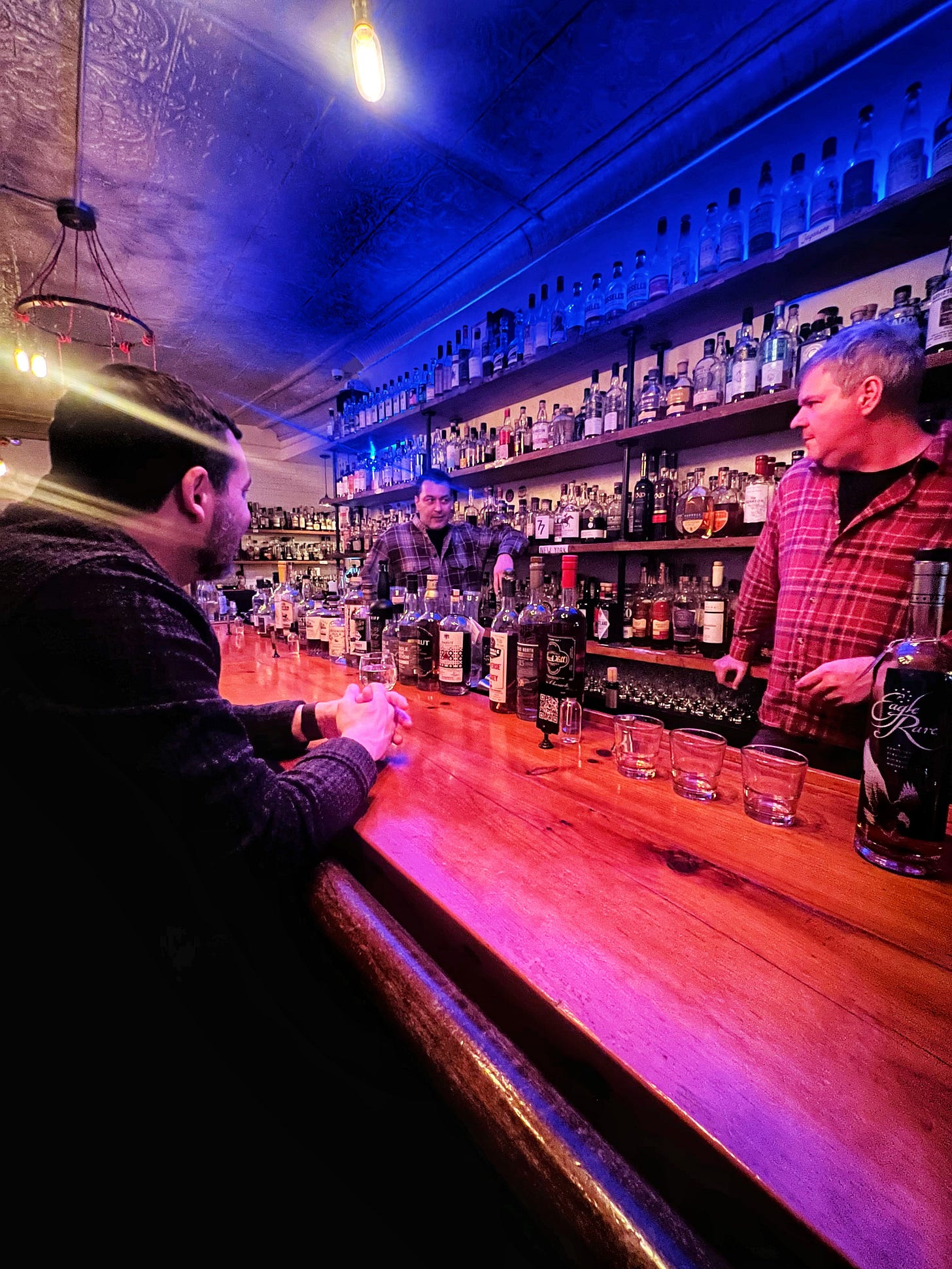
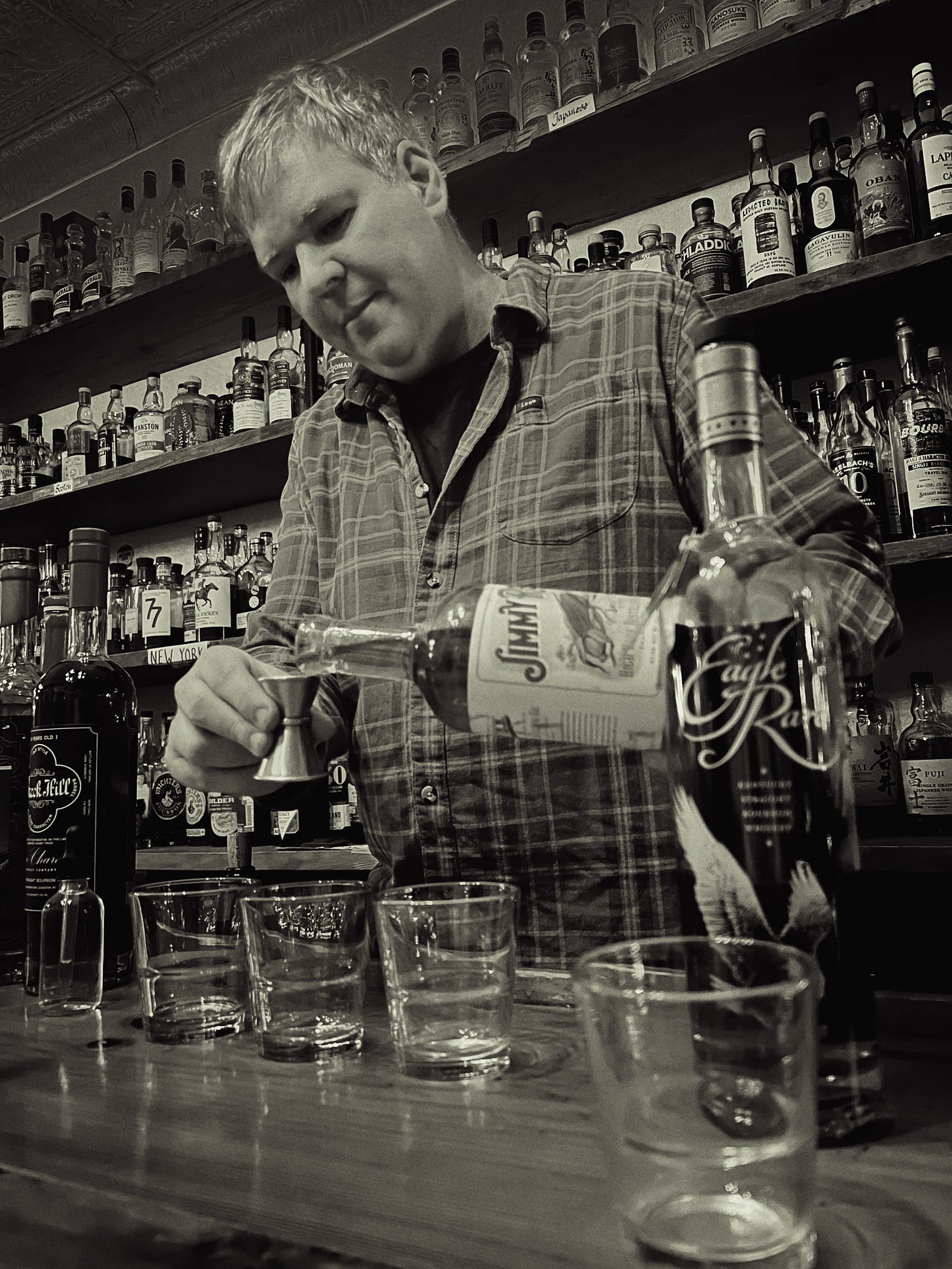
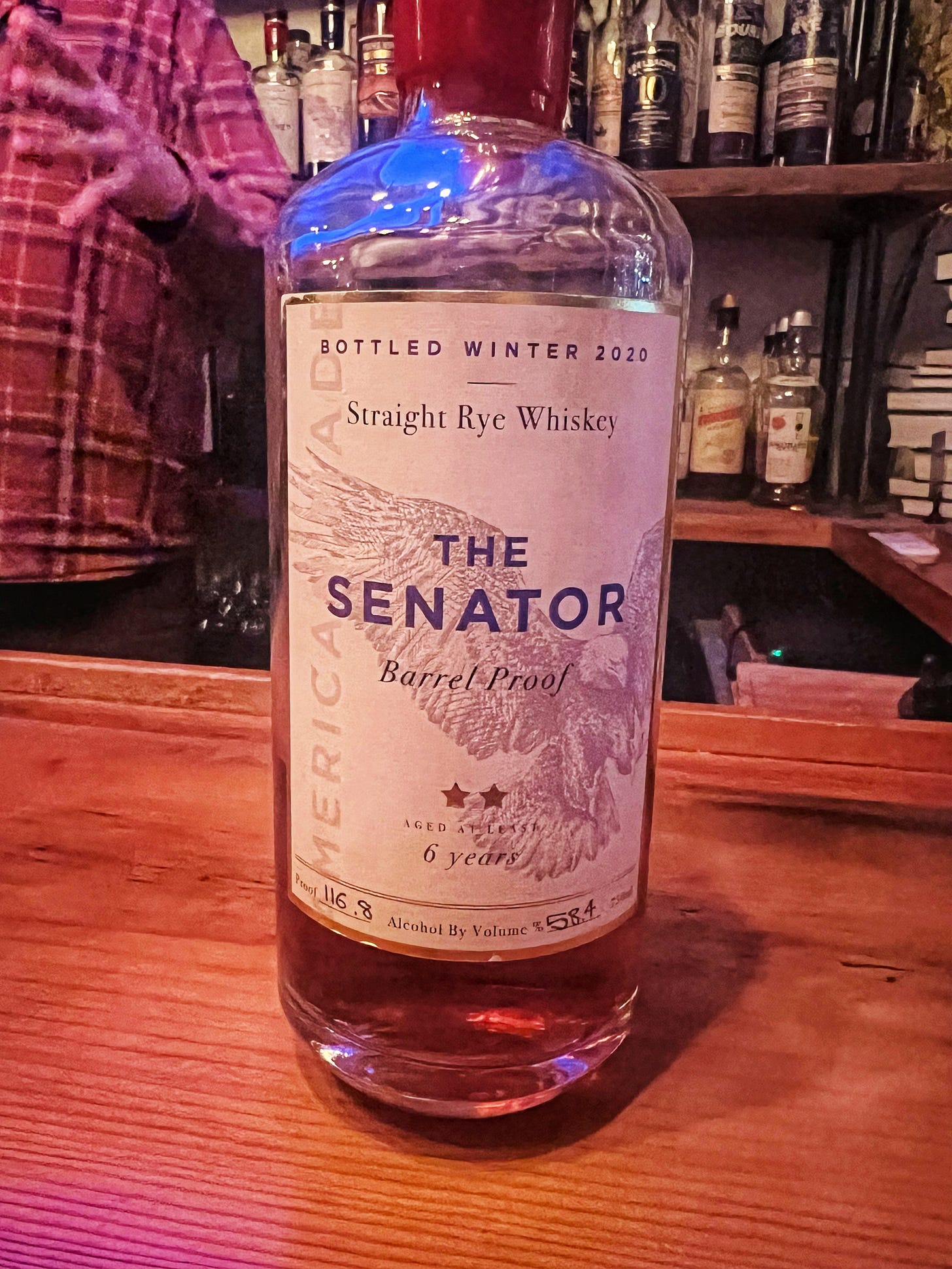
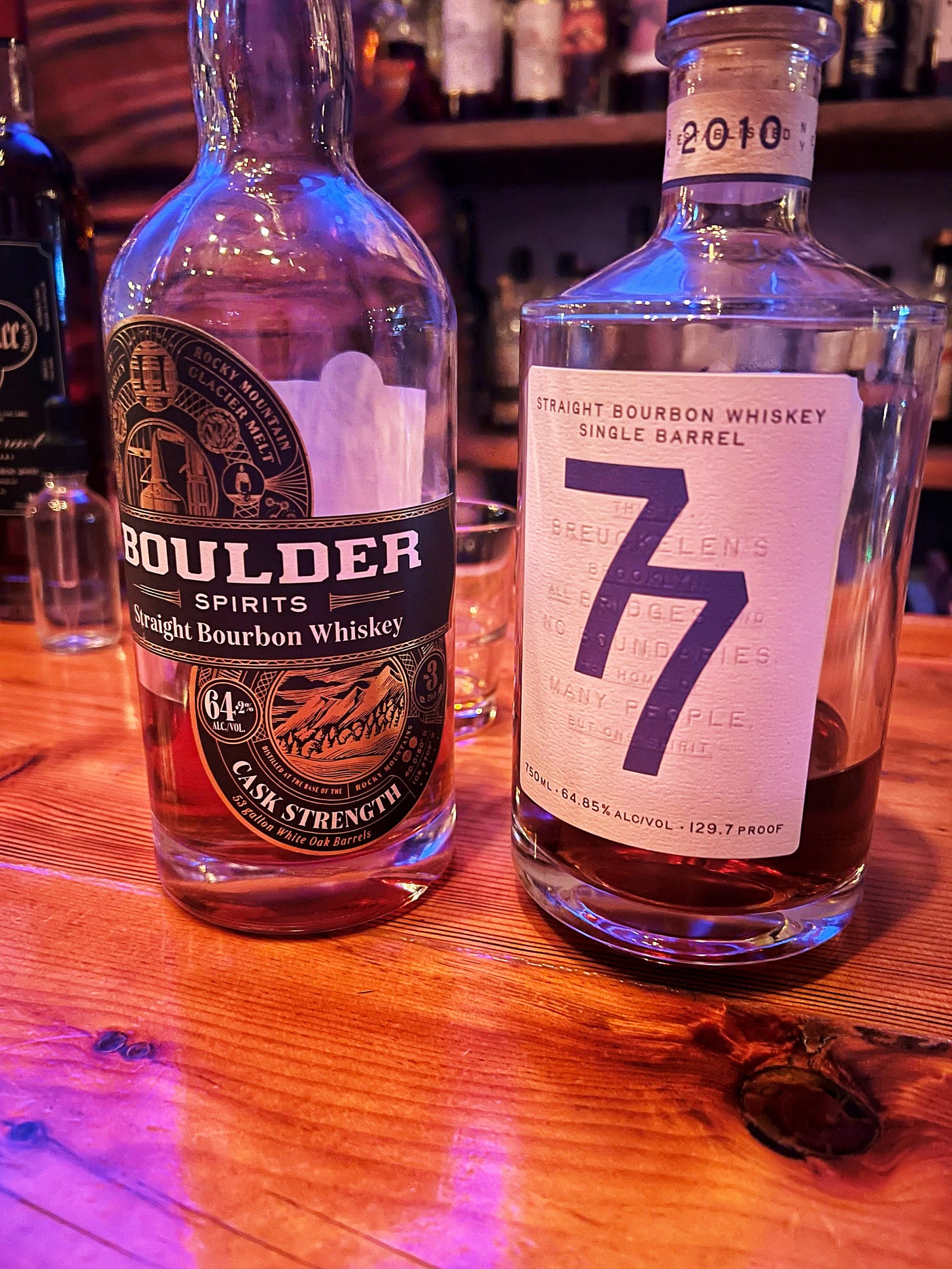
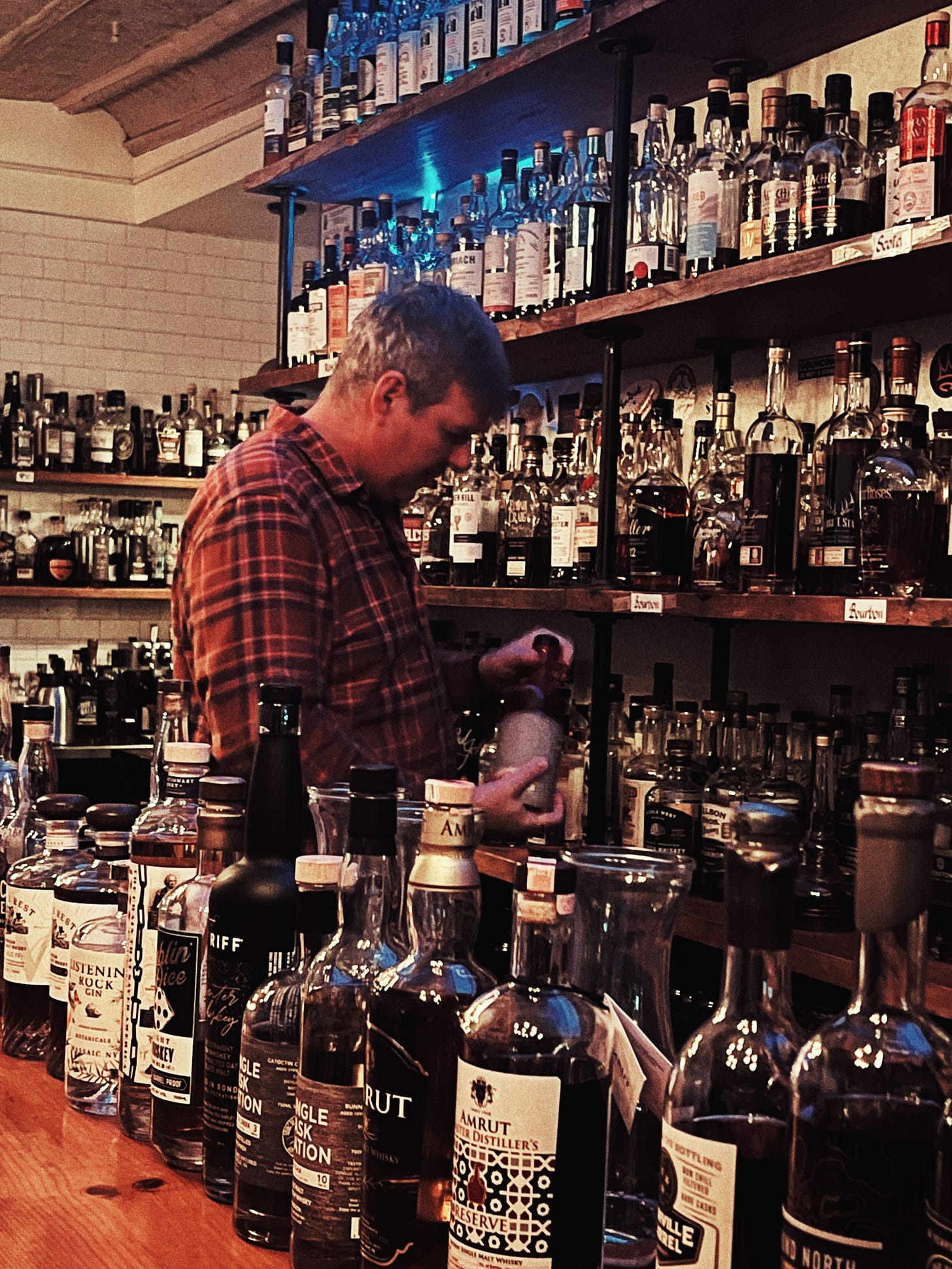
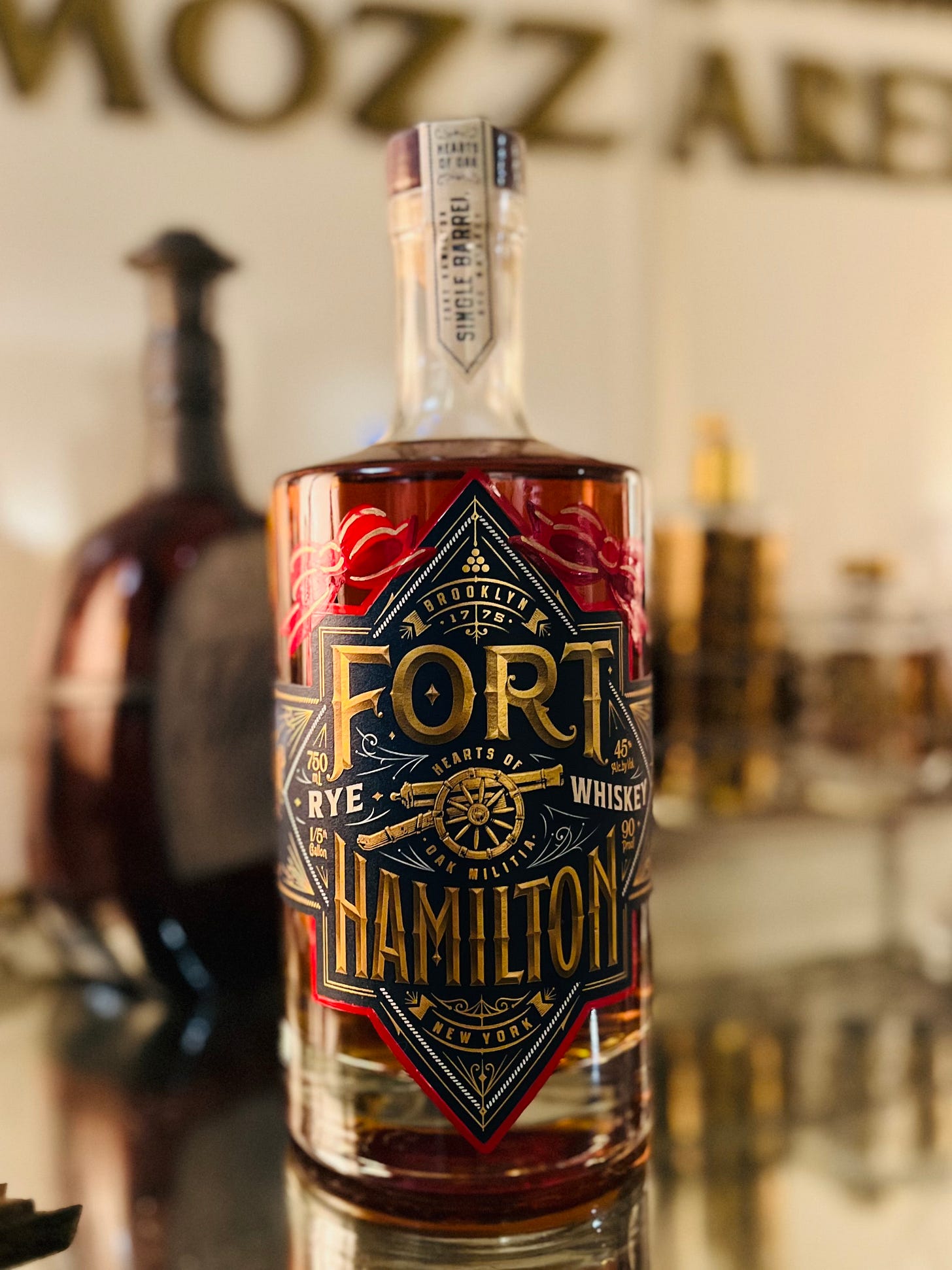
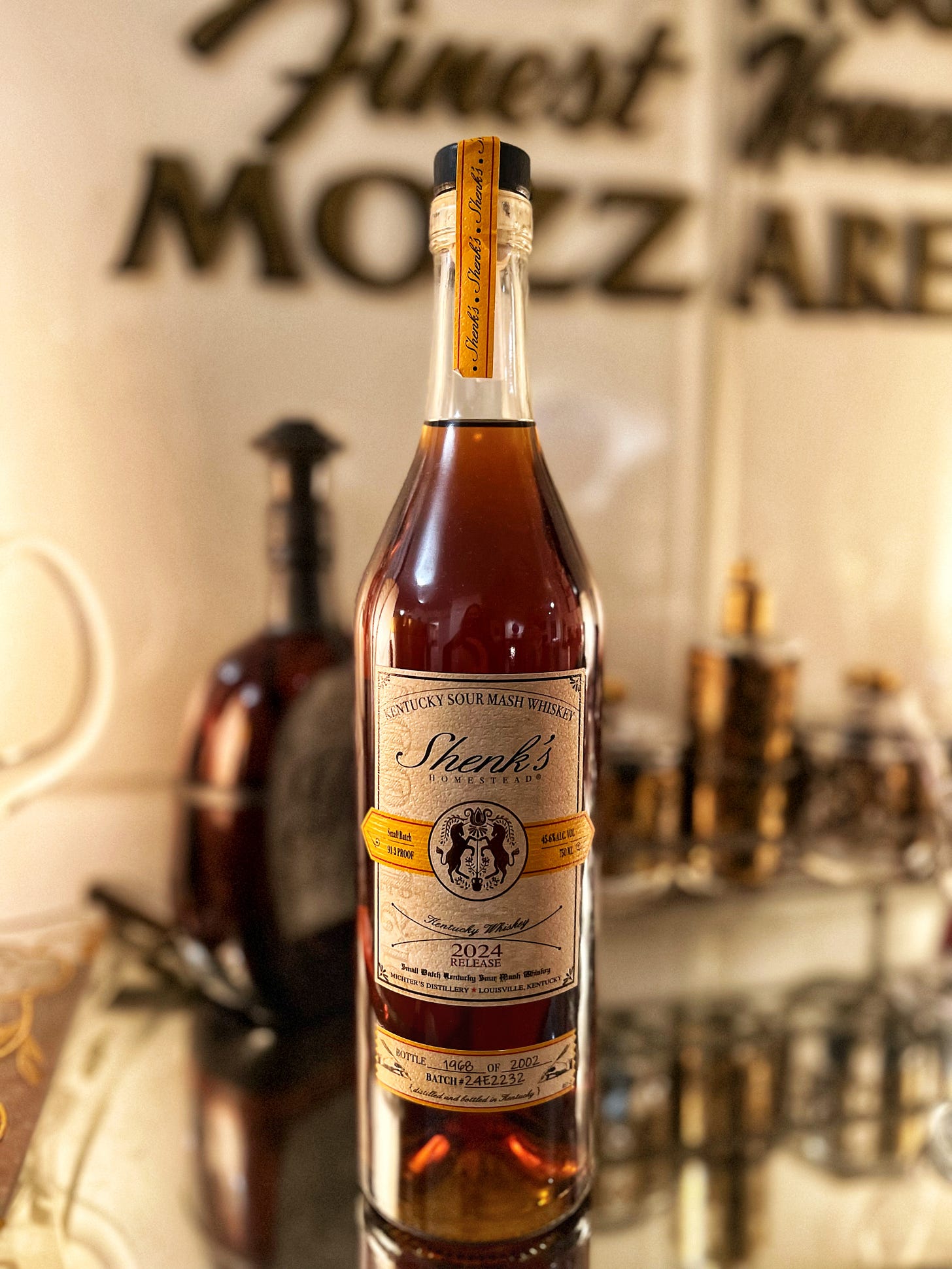
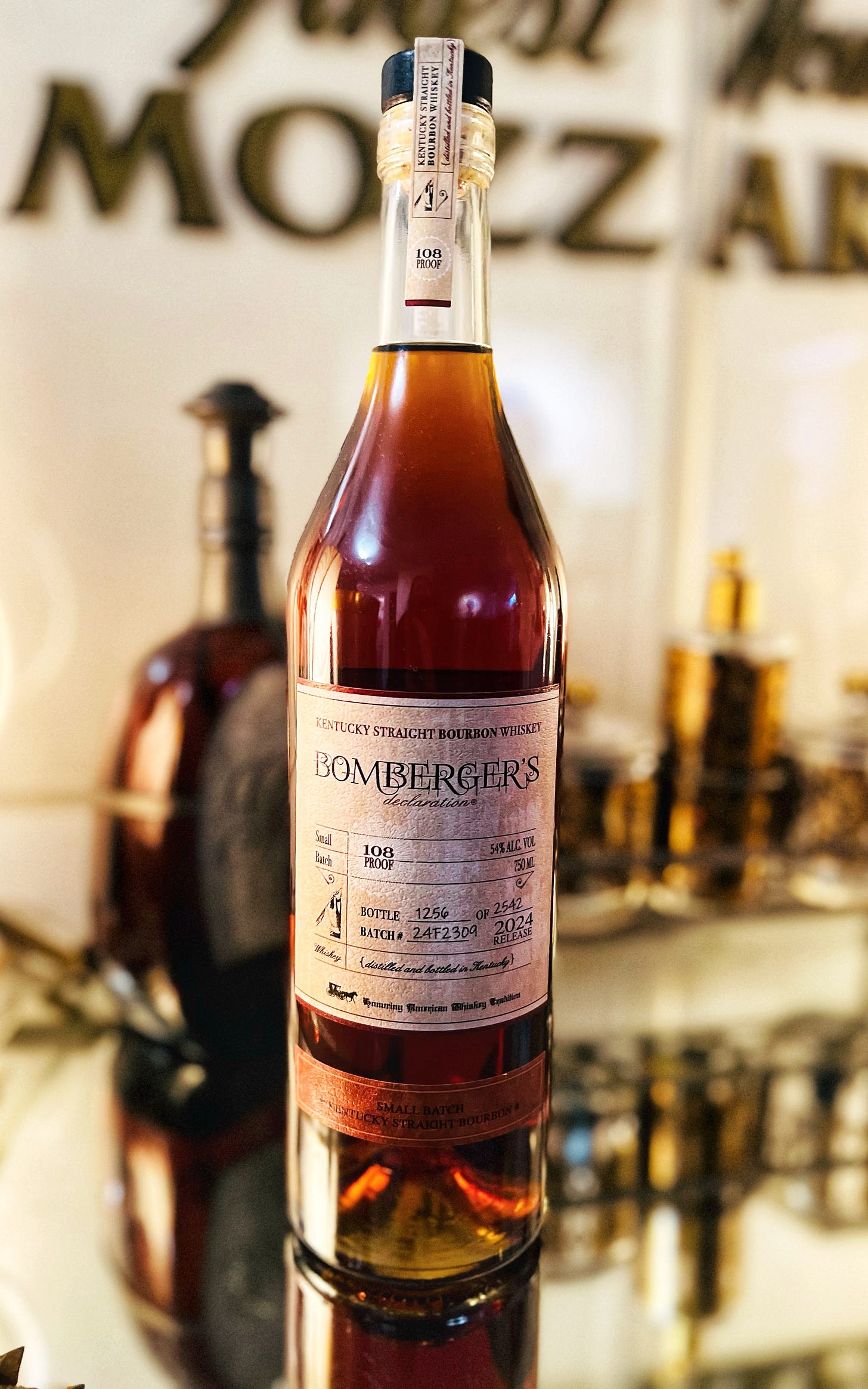
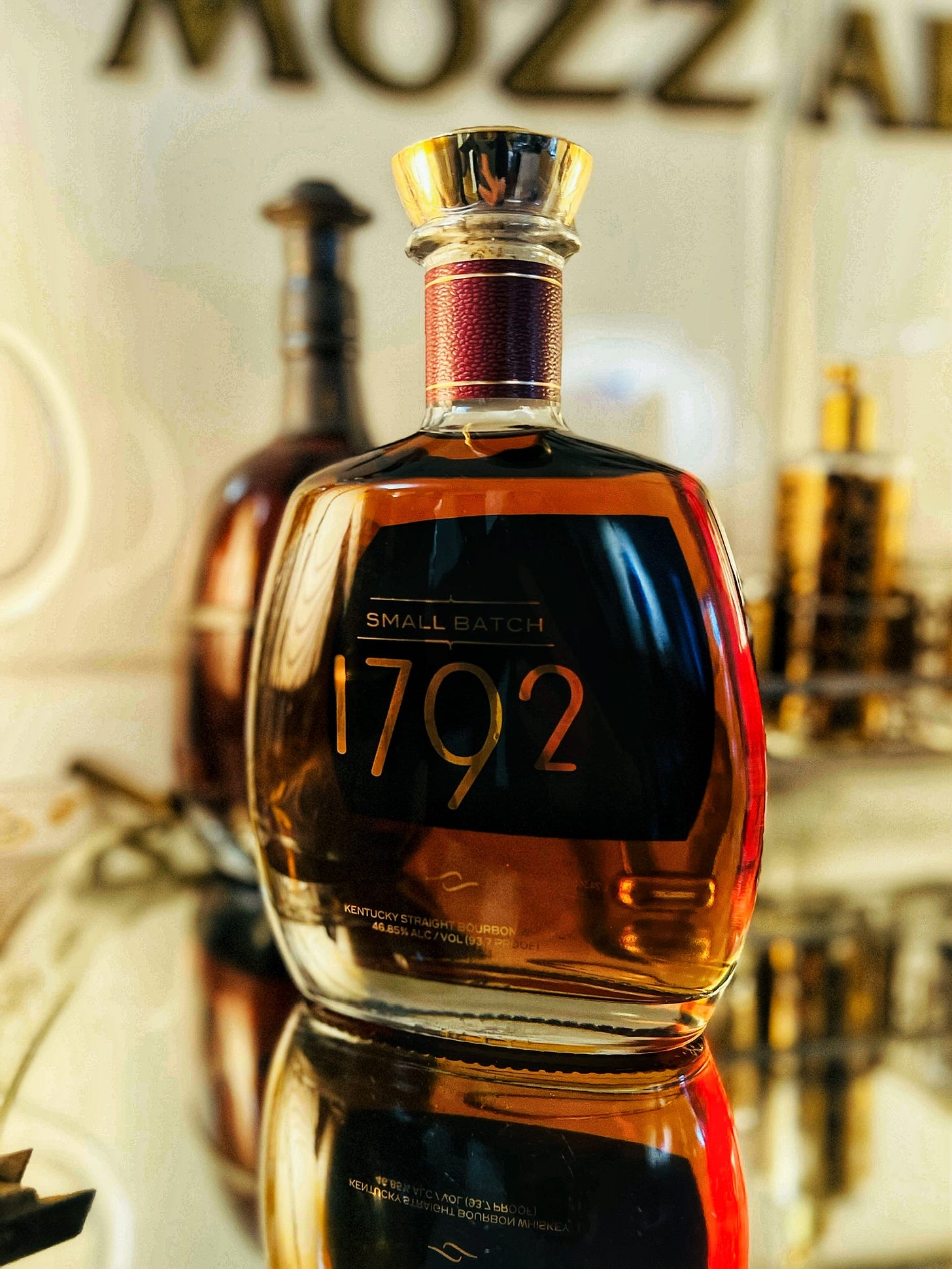

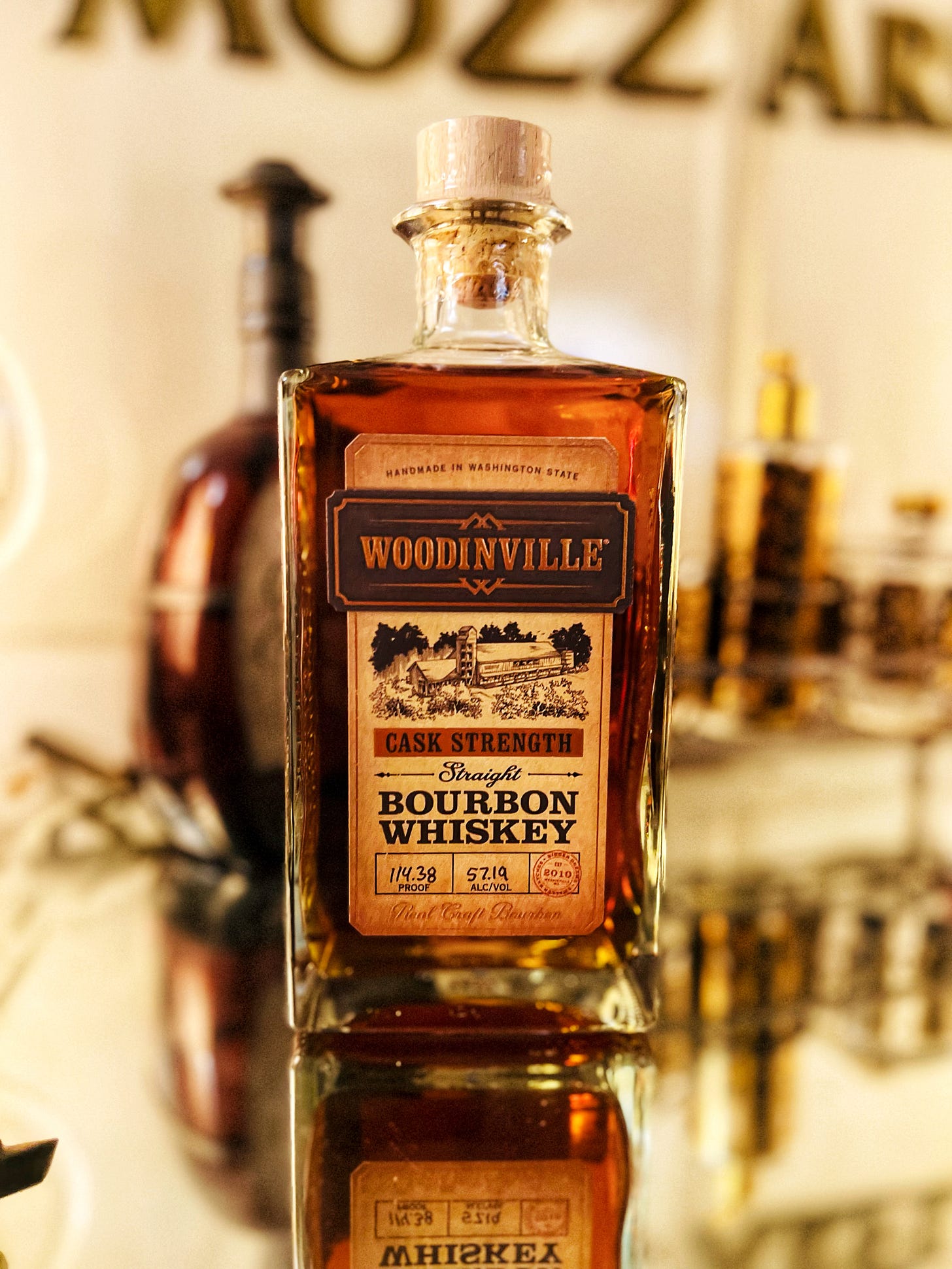
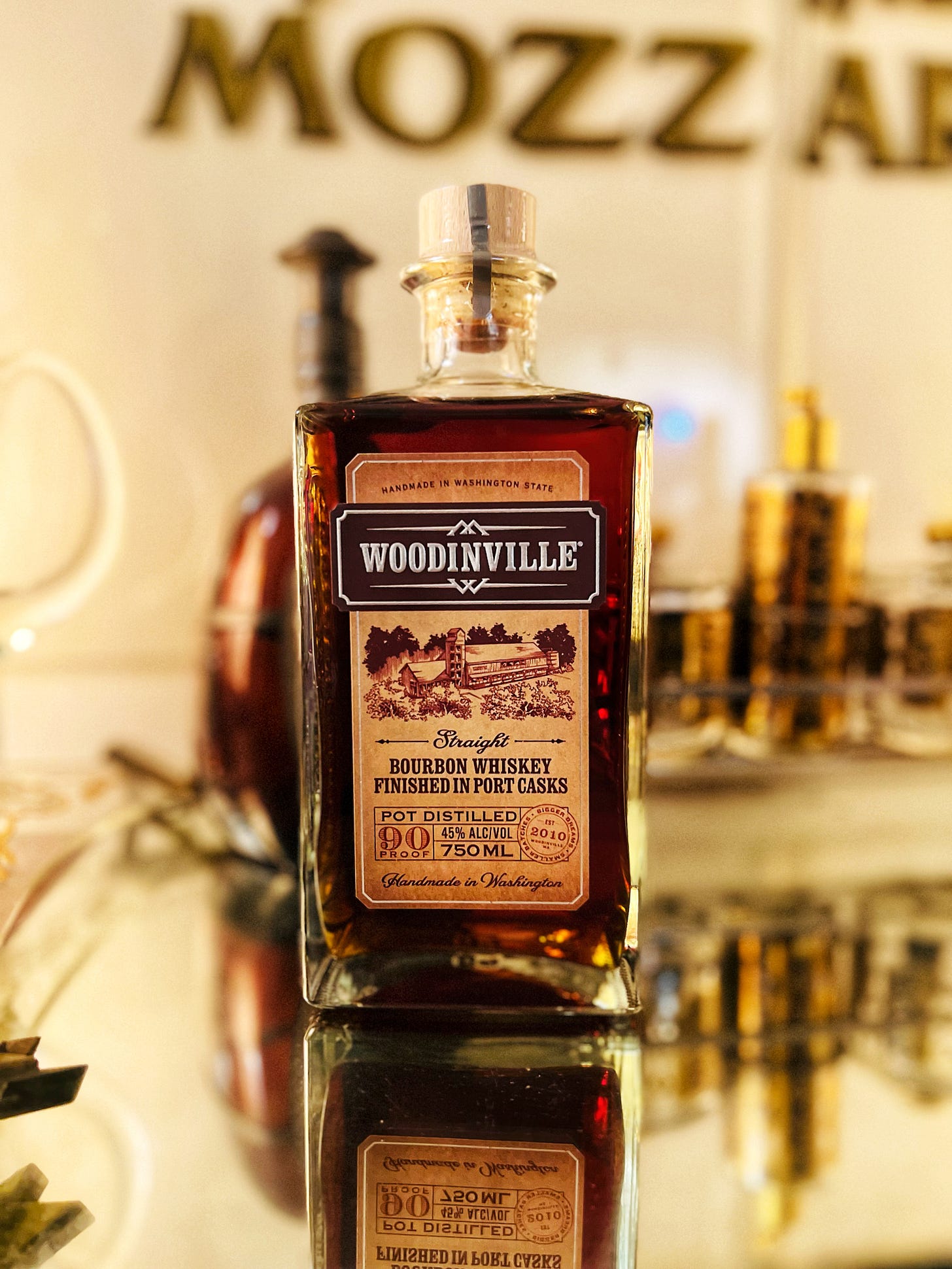
I love Travel Bar Mike. This was a great read!
Such a perfect tribute to this place and the man who has defined it, Mary Kate. Mike is the very best.
I still don’t remember how I found Travel Bar shortly after it opened. I chalk it up to the name inviting a sense of exploration since it was far away from where I’d usually be walking down Court St. It probably was after being at Buttermilk Channel (I miss it already).
Like any halfway decent person who’s ever walked into Travel Bar, i love this essential and unique spot! And I constantly marvel at the surprises Mike and the always warm and knowledgeable staffers provide.
After the previous post about the influence of LeNell’s and Char No. 4, other places that offered a broad sense of discovery, here’s to making sure Travel Bar gets the appreciation it deserves always (and that it is forever!)